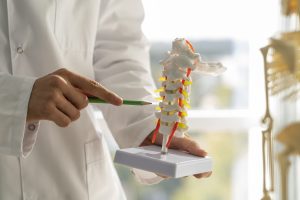
Knee replacement surgery, also known as knee arthroplasty, is a medical procedure in which a damaged or diseased knee joint is replaced with an artificial implant, known as a prosthesis. This surgical intervention is often recommended for individuals suffering from severe arthritis or significant knee injuries that impair mobility and quality of life. Over the years, knee replacement has become one of the most successful orthopedic surgeries, offering relief from pain and restoring function in the affected knee.
Why Knee Replacement is Needed
The primary reason people undergo knee replacement is to relieve chronic knee pain and disability. The most common condition leading to knee replacement is osteoarthritis, a degenerative joint disease that causes cartilage breakdown and joint pain. Other conditions include:
• Rheumatoid arthritis – an autoimmune disease causing joint inflammation
• Post-traumatic arthritis – due to a previous injury or fracture
• Avascular necrosis – lack of blood supply to the bone causing tissue death
• Congenital or developmental joint issues
When medication, physical therapy, lifestyle changes, or less invasive procedures fail to alleviate symptoms, surgery becomes the best option.
Types of Knee Replacement Surgery
There are several types of knee replacement surgeries based on the extent of joint damage:
1. Total Knee Replacement (TKR):
The most common form of knee replacement. Both sides of the knee joint are replaced with a metal and plastic prosthesis. This procedure is recommended for severe arthritis or damage throughout the entire joint.
2. Partial Knee Replacement (PKR):
Involves replacing only the damaged compartment of the knee (medial, lateral, or patellofemoral). This is a less invasive option with quicker recovery but is suitable only when damage is limited to one part of the joint.
3. Kneecap Replacement (Patellofemoral Arthroplasty):
Only the underside of the kneecap and its groove are replaced. It’s ideal for patients with arthritis limited to the front of the knee.
4. Complex or Revision Knee Replacement:
Performed when a previous knee replacement fails or for people with severe deformity or bone loss. It is a more intricate procedure.
Preparing for the Surgery
Before undergoing knee replacement, a comprehensive preoperative assessment is performed. This includes:
• Medical history and physical examination
• Blood tests and imaging (X-rays, MRI)
• Cardiac and pulmonary evaluation (if needed)
• Discussing medications with the surgeon (some may need to be stopped)
• Prehabilitation (pre-surgery physical therapy) to strengthen muscles around the knee
Patients are also advised to prepare their home environment for post-surgery mobility aids such as walkers, handrails, or raised toilet seats.
The Surgical Procedure
Knee replacement surgery typically takes 1 to 2 hours. It is performed under spinal, epidural, or general anesthesia. The steps include:
1. Incision: A cut is made over the knee to expose the joint.
2. Bone Preparation: Damaged cartilage and bone are removed from the femur (thigh bone), tibia (shin bone), and sometimes the kneecap.
3. Implant Placement: The artificial components made of metal alloys, plastics, or ceramics are positioned and secured.
4. Testing and Closure: The surgeon checks the joint alignment and motion before closing the incision with sutures or staples.
Minimally invasive techniques and robotic-assisted surgery are now available in some centers, offering less tissue trauma and faster recovery.
Recovery and Rehabilitation
Hospital stay is usually 2 to 3 days, depending on the individual’s health and type of surgery performed. Post-operative care involves:
• Pain management with medications
• Physiotherapy starting within 24 hours to regain movement
• Walking aids like a walker or crutches for initial support
• Blood clot prevention with medications or compression devices
Full recovery may take 6 to 12 weeks. Most patients can resume driving within 6 weeks and return to low-impact activities such as walking, swimming, or cycling within a few months. High-impact sports are generally discouraged.
Risks and Complications
While knee replacement surgery is generally safe, it carries some risks, such as:
• Infection
• Blood clots in the leg or lungs
• Implant loosening or wear
• Persistent pain or stiffness
• Nerve or blood vessel injury
• Allergic reaction to the implant material (rare)
Choosing a skilled orthopedic surgeon and following post-operative instructions reduces the risk of complications significantly.
Benefits of Knee Replacement
For most patients, knee replacement provides:
• Significant pain relief
• Improved mobility and function
• Better quality of life
• Ability to return to everyday activities and light exercises
The prosthetic knee can last 15–20 years or more, especially with modern materials and techniques.
Life After Knee Replacement
Post-surgery lifestyle modifications are important for maintaining joint health and prolonging the implant’s life. These include:
• Weight management to reduce joint stress
• Low-impact exercises such as walking, yoga, and swimming
• Avoiding high-impact sports like running or jumping
• Regular follow-ups with your orthopedic surgeon
Patients are encouraged to stay active but be cautious to avoid injuries or excessive strain on the new joint.
Knee replacement surgery is a transformative procedure for individuals suffering from chronic knee pain and mobility issues due to arthritis or injury. With advancements in surgical techniques, anesthesia, and implant materials, it has become safer and more effective than ever before. While it requires careful consideration, planning, and rehabilitation, the outcomes are often life-changing—offering patients renewed independence, improved mobility, and a pain-free life.
If you’re considering knee replacement, consult with best knee replacement surgeon in Delhi NCR to determine if it’s the right option for you and what type of procedure would be most beneficial based on your condition.

 :
: